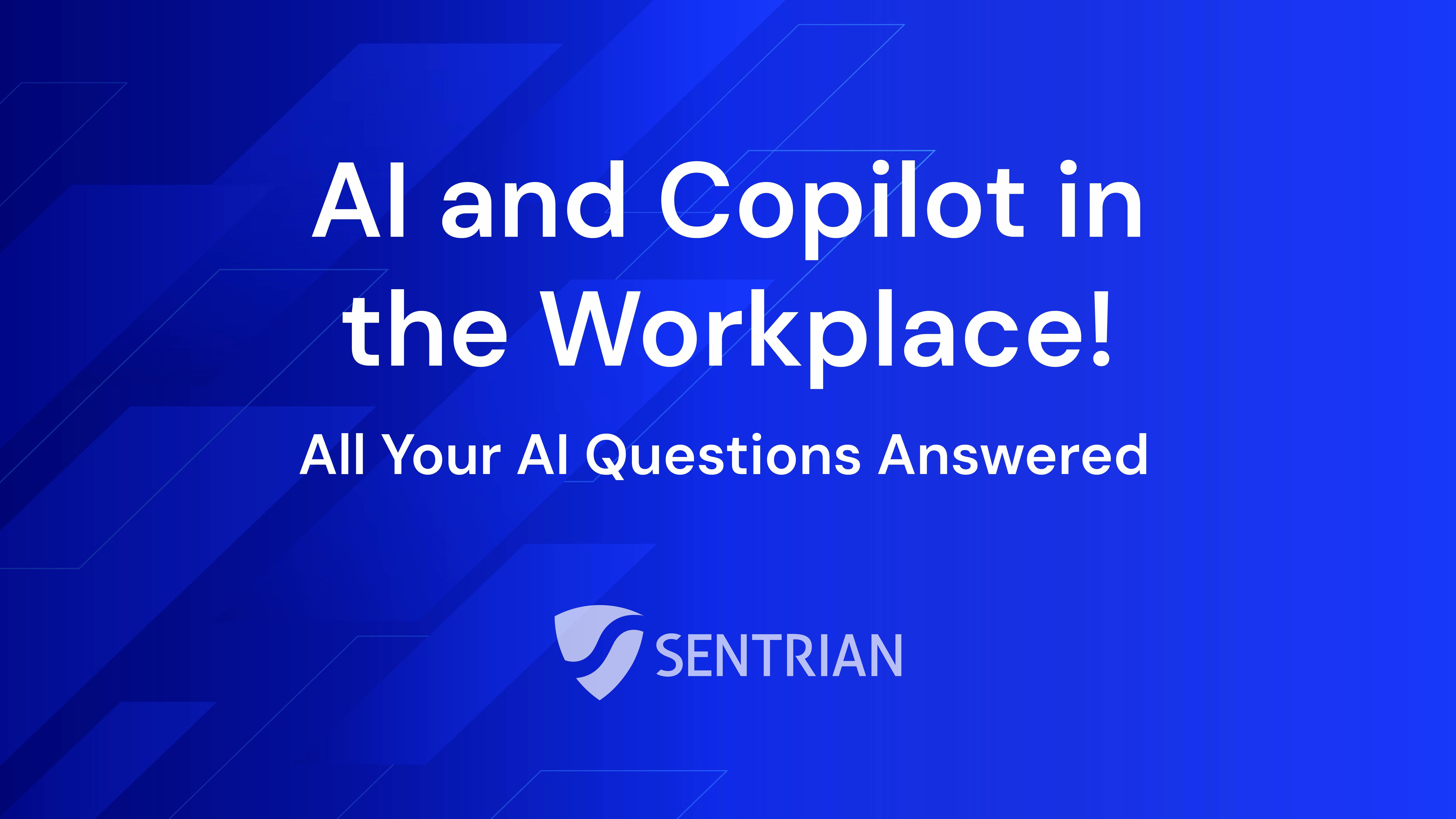Our recent webinar, AI in the Workplace, was our most popular yet – and it’s easy to see why.
With 68% of Australians now using AI in the workplace, the focus is shifting from curiosity to capability. It’s no longer just about experimenting – it’s about using AI effectively, securely, and responsibly. Organisations and individuals alike are navigating how to harness AI’s potential without compromising sensitive company or client data, or exposing teams to unnecessary risk.
Attendees asked some fantastic questions around effective prompting, team productivity, and AI’s impact on entry-level roles. We’ve compiled the top five questions and our AI experts, Doug and Jaeden, weighed in.
1. Is there a helpful online resource with prompt examples for office tasks like analysis and reporting?
Yes! Microsoft Copilot includes a built-in prompt library that’s perfect for office staff. You can:
- Browse curated examples for tasks like data analysis, reporting, and communication.
- Add your own prompts.
- Share them with colleagues to build a collaborative knowledge base.
2. Which AI tools comply with company security policies and avoid accessing restricted SharePoint libraries? How do you get citation references for AI-generated content?
This depends on your organisation’s data governance strategy and how your AI tools are configured.
- Microsoft Copilot respects access permissions – it only pulls data from sources you have access to (e.g. OneDrive, SharePoint).
- You can configure Copilot to exclude specific sensitivity labels or libraries via its admin portal.
- Citations and sources are typically included with responses. You can also request citations directly in your prompt for more transparency.
If you're using the paid version of Copilot, it integrates deeply with Microsoft 365 and adheres to your company’s security policies – provided governance is properly set up.
3. How do you see entry-level roles being affected by AI?
We don’t see AI replacing entry-level roles. What we do see is AI reshaping how those roles function. We think it’s a huge opportunity. AI helps automate the repetitive stuff, which means entry-level staff can spend more time on meaningful work and learning new skills.
We’ve been following Microsoft’s Work Trend Index, and one idea that really stuck with us is the concept of “agentic workplaces.” It’s about having AI agents that support us with niche tasks – almost like having a digital teammate.
So yes, roles are changing, and we believe we all need to shift our mindset. We’re investing time in learning how to use these tools well, and we'd encourage others to do the same. AI isn’t taking jobs – it’s transforming them. And now’s the time to lean in and grow with it.
4. Can you talk about using AI with Microsoft Excel?
For those of us who have used Copilot in Excel, at the moment it’s a little bit limited. It’s probably the one thing Microsoft sees the most feedback on - how those limitations are just too difficult to work with.
But they’ve been hard at work on that. This November, Microsoft is releasing Agent Mode for Excel. That will allow Copilot to work directly with the data you have in your spreadsheet.
Here’s some sample information we wanted to test out in the screenshot below - some sample month-on-month data. It’s added a row, it’s calculated, worked out all the formulas, set them, and put them into my spreadsheet for me. And then it’s put the data into a graph.
We can prompt with Copilot directly in the side panel there - and you can manually manipulate it, or you can ask Copilot to edit it. You can ask it to remove the grid lines, and it’ll do that live for you.
So, Copilot with Excel is something to look forward to. The best upcoming feature is going to be the formulas. Copilot will be able to work out all the formulas for you instead of you trying to work them out on your own.
5. Can I build a custom AI agent?
Absolutely.
At Sentrian, we built a custom Copilot agent for our Head of People & Culture, Sophia. Here’s how:
We used a SharePoint library as the source of truth.
The agent was configured with no-code/low-code instructions.
It now serves as an internal resource for staff, always up to date with the latest documents and news.
For example, Sophia adds relevant articles to the SharePoint library. The agent then uses that content to generate policy documents or recommendations – complete with citations.
This kind of agent can be built within your Copilot subscription, making it a powerful tool for any team.
Thanks again to everyone who joined our webinar - and an extra special thank you to our very own AI experts Doug Morrison and Jaeden Cook, who shared their wisdom and answered these insightful questions.
Bringing AI into your workplace
We’ve seen firsthand how powerful AI can be when it’s introduced with purpose and structure. Whether you’re exploring tools like Facilitator or diving into Microsoft Copilot, the key is making sure they align with your team’s goals and ways of working.
If you’re thinking about integrating AI into your workflows, we’re here to help. We can take a look at your current setup, uncover opportunities, and build solutions that grow with you – not just for today, but for what’s next.
→ Reach out to our team
→ Join our next webinar







